![]()
![]()
![]()
Use LEFT and RIGHT arrow keys to navigate between flashcards;
Use UP and DOWN arrow keys to flip the card;
H to show hint;
A reads text to speech;
38 Cards in this Set
- Front
- Back
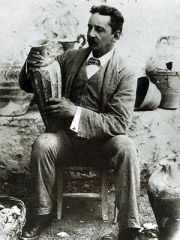
|
Sir Arthur Evans (1851-1941)
|
|
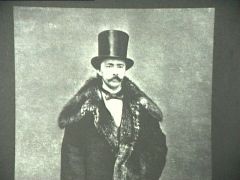
|
Heinrich Schliemann (1822-1890)
|
|
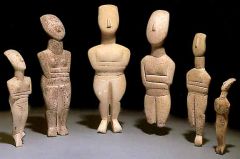
|
Cycladic, Assorted Figures, c. 2700-2500 BCE, marble
Nude Women, strict symmetry, clutching abdomens, 3 evenly spaced circles, originally painted mortifs in blue, red, & green,the way cycladians decorated their own bodies. eyes= the viewer's return gaze |
|
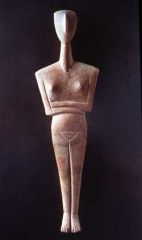
|
*Cycladic, Figure of a Woman, c. 2500-2200 BCE, marble
|
|

|
Cycladic, Heads, c. 2500 BCE, marble
|
|
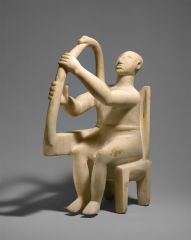
|
Cycladic, Seated Harp Player,
c. 2700-2500 BCE, marble |
|
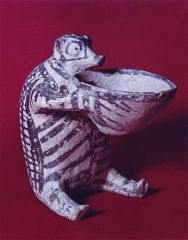
|
Cycladic, Bear with Cup, c. 2800 BCE, cla
|
|
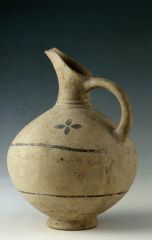
|
Cycladic, Spouted Jug, c. 1800 BCE, clay
|
|

|
Photograph of Sir Arthur Evans, Crete, Legend of King Minos, Theseus, kept a human-eating monster called a MINOTAUR(half human half bull) ; minoans=selfsuffiient agriculturers.
Ariande, Minotaur , labryrinth |
|

|
*Minoan, Reconstruction of the “palace” complex at Knossos, Crete, c. 2000-1375 BCE; facades & lower walls were dressed w DRESSED STONE (cut & highly finished masonry); major earthquake; painted (Geometric borders); ceramic jars holding olive oil)
|
|
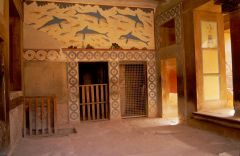
|
Queen’s Megaron with Dolphin fresco, Knosso
|
|
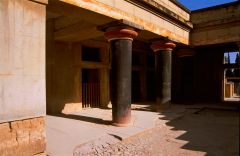
|
Throne Room (Upper level), Knossos
|
|

|
Earthware Pithoi, in situ, Knossos
|
|
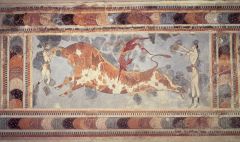
|
*Minoan, Bull Jumping, from Knossos, c. 1550-1450 BCE, fresco ; from the palace; woman on the right is prepared to catch te man in his leap, she is grasping the bull by the horns to help steady it or begin her own vault; DEPICTED WOMEN WITH PALE SKIN AND MEN WITH DARK SKIN
|
|
|
Buon fresco
|
Buon fresco (Italian for true fresco) is a fresco painting technique in which alkaline resistant pigments, ground in water, are applied to plaster when it is still wet, as opposed to fresco-secco (or a secco). disadvantage of Buon fresco is that it must be done quickly without mistakes
|
|
|
fresco secco
|
the color does not become part of the wall and tends to flake off over time.
|
|
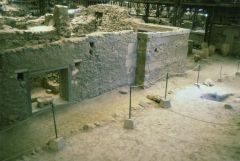
|
Minoan, Houses at Akrotiri, Thera, c. 1650 BCE
|
|
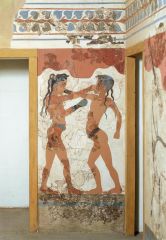
|
Minoan, Boys Fighting, from Akrotiri, Thera
c. 1630 BCE, fresco |
|

|
Minoan, Fisherman, from Akrotiri, Thera,
c. 1630 BCE, fresco |
|
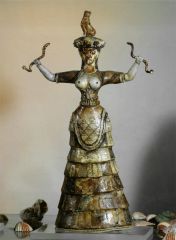
|
Minoan, Woman or Goddess with Snakes,
c. 1700-1550 BCE, faience |
|
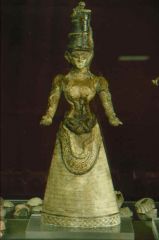
|
Minoan, Woman or Goddess with Snakes,
c. 1700 BCE, faienc |
|
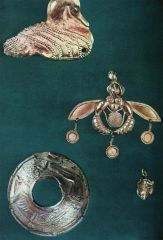
|
Minoan, Assorted Gold Ornaments,
c. 1700-1550 BCE, gold |
|
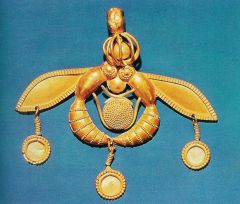
|
*Minoan, Pendant of Gold Bees, c. 1700-1550 BCE, gold
Filigree, repoussé (hammering relief decoration ), granulation (minute granules or balls, of precious metal fused to a surface) |
|
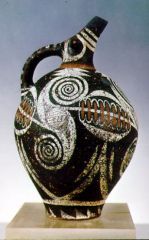
|
Minoan, Jug, Karames Style, c. 2000 –
1900 BCE, ceramic |
|
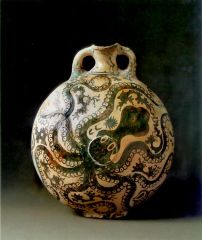
|
*Minoan, Octopus Flask, Marine Style, c. 1500-
1450 BCE, ceramic ; decorate w Marine Life, in celebration of Cretan maritime power (microscopic life in seawater; sea creatures float among octupus' tentacles) |
|
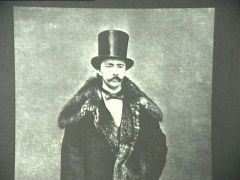
|
Photograph of Heinrich Schliemann
|
|

|
Mycenaean, Citadel of Mycenae, c. 1600-1200 BCE, Greece
|
|
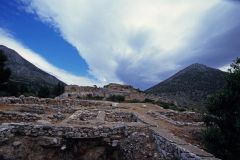
|
Citadel at Mycenae and surrounding landscap
|
|
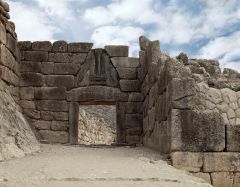
|
*Mycenaean, Lion Gate, c. 1250 BCE, limestone relief
Dolmen, ENTRANCE to the citadel, relieving arch (post-and-lintel frame was crowned by this) which is a corbel arch spanning the open space w layers of stones, each layer projecting over the preceding layer |
|
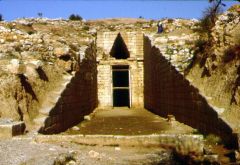
|
*Mycenaean, Tholos or the “Treasury of Atreus,” Mycenae, c. 1300-1200 BCE
|
|
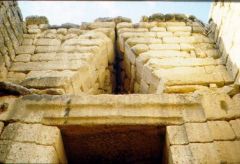
|
Cyclopeian arch, Treasury of Atreu ; Schematic drawing
|
|
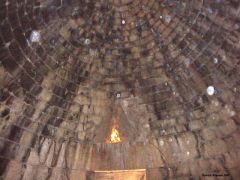
|
Detail of Corbelled Vault, Treasure of Atreus
|
|
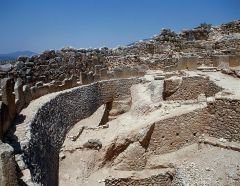
|
Citadel at Mycenae, image and reconstruction of “Agamemnon’s tomb”
|
|

|
Mycenaean, ”Mask of Agamemnon,” funerary mask,
c. 1600-1550 BCE, gold |
|
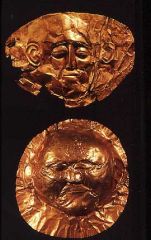
|
Funerary masks from Mycenae
|
|
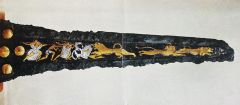
|
*Mycenaean, Dagger Blade with Inlaid Lion Hunt, c. 1550-1500 BCE, bronze inlaid with gold,
Silver, and niello |
|
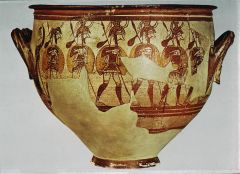
|
Mycenaean, Warrior Vase, c. 1300-1100 BCE,
ceramic |
|
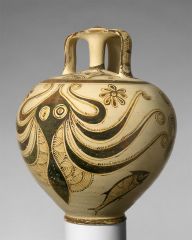
|
Mycenaean, Octopus Jug, c. 1200 BCE,
terracotta |

